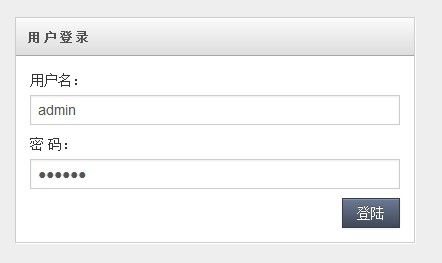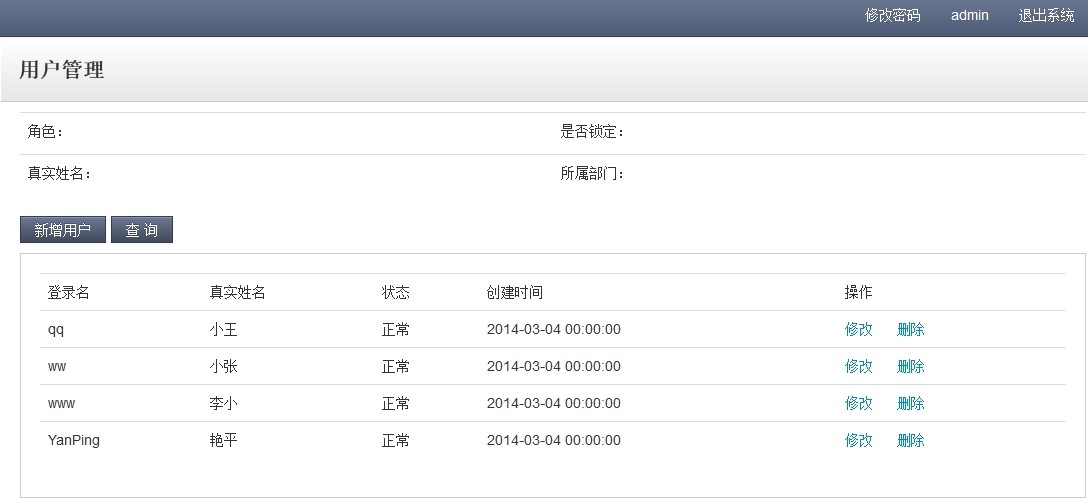spring实现读写分离
(转自:http://www.cnblogs.com/surge/p/3582248.html)
现在大型的电子商务系统,在数据库层面大都采用读写分离技术,就是一个Master数据库,多个Slave数据库。Master库负责数据更新和实时数据查询,Slave库当然负责非实时数据查询。因为在实际的应用中,数据库都是读多写少(读取数据的频率高,更新数据的频率相对较少),而读取数据通常耗时比较长,占用数据库服务器的CPU较多,从而影响用户体验。我们通常的做法就是把查询从主库中抽取出来,采用多个从库,使用负载均衡,减轻每个从库的查询压力。
采用读写分离技术的目标:有效减轻Master库的压力,又可以把用户查询数据的请求分发到不同的Slave库,从而保证系统的健壮性。我们看下采用读写分离的背景。
随着网站的业务不断扩展,数据不断增加,用户越来越多,数据库的压力也就越来越大,采用传统的方式,比如:数据库或者SQL的优化基本已达不到要求,这个时候可以采用读写分离的策 略来改变现状。
具体到开发中,如何方便的实现读写分离呢?目前常用的有两种方式:
1 第一种方式是我们最常用的方式,就是定义2个数据库连接,一个是MasterDataSource,另一个是SlaveDataSource。更新数据时我们读取MasterDataSource,查询数据时我们读取SlaveDataSource。这种方式很简单,我就不赘述了。
2 第二种方式动态数据源切换,就是在程序运行时,把数据源动态织入到程序中,从而选择读取主库还是从库。主要使用的技术是:annotation,Spring AOP ,反射。下面会详细的介绍实现方式。
在介绍实现方式之前,我们先准备一些必要的知识,spring 的AbstractRoutingDataSource 类
AbstractRoutingDataSource这个类 是spring2.0以后增加的,我们先来看下AbstractRoutingDataSource的定义:
public abstract class AbstractRoutingDataSource extends AbstractDataSource implements InitializingBean {}
AbstractRoutingDataSource继承了AbstractDataSource ,而AbstractDataSource 又是DataSource 的子类。DataSource 是javax.sql 的数据源接口,定义如下:
public interface DataSource extends CommonDataSource,Wrapper {
/**
* <p>Attempts to establish a connection with the data source that
* this <code>DataSource</code> object represents.
*
* @return a connection to the data source
* @exception SQLException if a database access error occurs
*/
Connection getConnection() throws SQLException;
/**
* <p>Attempts to establish a connection with the data source that
* this <code>DataSource</code> object represents.
*
* @param username the database user on whose behalf the connection is
* being made
* @param password the user's password
* @return a connection to the data source
* @exception SQLException if a database access error occurs
* @since 1.4
*/
Connection getConnection(String username, String password)
throws SQLException;
}

public interface DataSource extends CommonDataSource,Wrapper {
/**
* <p>Attempts to establish a connection with the data source that
* this <code>DataSource</code> object represents.
*
* @return a connection to the data source
* @exception SQLException if a database access error occurs
*/
Connection getConnection() throws SQLException;
/**
* <p>Attempts to establish a connection with the data source that
* this <code>DataSource</code> object represents.
*
* @param username the database user on whose behalf the connection is
* being made
* @param password the user's password
* @return a connection to the data source
* @exception SQLException if a database access error occurs
* @since 1.4
*/
Connection getConnection(String username, String password)
throws SQLException;
}

DataSource 接口定义了2个方法,都是获取数据库连接。我们在看下AbstractRoutingDataSource 如何实现了DataSource接口:
public Connection getConnection() throws SQLException {
return determineTargetDataSource().getConnection();
}
public Connection getConnection(String username, String password) throws SQLException {
return determineTargetDataSource().getConnection(username, password);
}

public Connection getConnection() throws SQLException {
return determineTargetDataSource().getConnection();
}
public Connection getConnection(String username, String password) throws SQLException {
return determineTargetDataSource().getConnection(username, password);
}

很显然就是调用自己的determineTargetDataSource() 方法获取到connection。determineTargetDataSource方法定义如下:
protected DataSource determineTargetDataSource() {
Assert.notNull(this.resolvedDataSources, "DataSource router not initialized");
Object lookupKey = determineCurrentLookupKey();
DataSource dataSource = this.resolvedDataSources.get(lookupKey);
if (dataSource == null && (this.lenientFallback || lookupKey == null)) {
dataSource = this.resolvedDefaultDataSource;
}
if (dataSource == null) {
throw new IllegalStateException("Cannot determine target DataSource for lookup key [" + lookupKey + "]");
}
return dataSource;
}

protected DataSource determineTargetDataSource() {
Assert.notNull(this.resolvedDataSources, "DataSource router not initialized");
Object lookupKey = determineCurrentLookupKey();
DataSource dataSource = this.resolvedDataSources.get(lookupKey);
if (dataSource == null && (this.lenientFallback || lookupKey == null)) {
dataSource = this.resolvedDefaultDataSource;
}
if (dataSource == null) {
throw new IllegalStateException("Cannot determine target DataSource for lookup key [" + lookupKey + "]");
}
return dataSource;
}

我们最关心的还是下面2句话:
Object lookupKey = determineCurrentLookupKey();
DataSource dataSource = this.resolvedDataSources.get(lookupKey);
determineCurrentLookupKey方法返回lookupKey,resolvedDataSources方法就是根据lookupKey从Map中获得数据源。resolvedDataSources 和determineCurrentLookupKey定义如下:
private Map<Object, DataSource> resolvedDataSources;
protected abstract Object determineCurrentLookupKey()
看到以上定义,我们是不是有点思路了,resolvedDataSources是Map类型,我们可以把MasterDataSource和SlaveDataSource存到Map中,如下:
key value
master MasterDataSource
slave SlaveDataSource
我们在写一个类DynamicDataSource 继承AbstractRoutingDataSource,实现其determineCurrentLookupKey() 方法,该方法返回Map的key,master或slave。
好了,说了这么多,有点烦了,下面我们看下怎么实现。
上面已经提到了我们要使用的技术,我们先看下annotation的定义:
@Retention(RetentionPolicy.RUNTIME)
@Target(ElementType.METHOD)
public @interface DataSource {
String value();
}
@Retention(RetentionPolicy.RUNTIME)
@Target(ElementType.METHOD)
public @interface DataSource {
String value();
}
我们还需要实现spring的抽象类AbstractRoutingDataSource,就是实现determineCurrentLookupKey方法:
public class DynamicDataSource extends AbstractRoutingDataSource {
@Override
protected Object determineCurrentLookupKey() {
// TODO Auto-generated method stub
return DynamicDataSourceHolder.getDataSouce();
}
}
public class DynamicDataSourceHolder {
public static final ThreadLocal<String> holder = new ThreadLocal<String>();
public static void putDataSource(String name) {
holder.set(name);
}
public static String getDataSouce() {
return holder.get();
}
}

public class DynamicDataSource extends AbstractRoutingDataSource {
@Override
protected Object determineCurrentLookupKey() {
// TODO Auto-generated method stub
return DynamicDataSourceHolder.getDataSouce();
}
}
public class DynamicDataSourceHolder {
public static final ThreadLocal<String> holder = new ThreadLocal<String>();
public static void putDataSource(String name) {
holder.set(name);
}
public static String getDataSouce() {
return holder.get();
}
}

从DynamicDataSource 的定义看出,他返回的是DynamicDataSourceHolder.getDataSouce()值,我们需要在程序运行时调用DynamicDataSourceHolder.putDataSource()方法,对其赋值。下面是我们实现的核心部分,也就是AOP部分,DataSourceAspect定义如下:
public class DataSourceAspect {
public void before(JoinPoint point)
{
Object target = point.getTarget();
String method = point.getSignature().getName();
Class<?>[] classz = target.getClass().getInterfaces();
Class<?>[] parameterTypes = ((MethodSignature) point.getSignature())
.getMethod().getParameterTypes();
try {
Method m = classz[0].getMethod(method, parameterTypes);
if (m != null && m.isAnnotationPresent(DataSource.class)) {
DataSource data = m
.getAnnotation(DataSource.class);
DynamicDataSourceHolder.putDataSource(data.value());
System.out.println(data.value());
}
} catch (Exception e) {
// TODO: handle exception
}
}
}

public class DataSourceAspect {
public void before(JoinPoint point)
{
Object target = point.getTarget();
String method = point.getSignature().getName();
Class<?>[] classz = target.getClass().getInterfaces();
Class<?>[] parameterTypes = ((MethodSignature) point.getSignature())
.getMethod().getParameterTypes();
try {
Method m = classz[0].getMethod(method, parameterTypes);
if (m != null && m.isAnnotationPresent(DataSource.class)) {
DataSource data = m
.getAnnotation(DataSource.class);
DynamicDataSourceHolder.putDataSource(data.value());
System.out.println(data.value());
}
} catch (Exception e) {
// TODO: handle exception
}
}
}

为了方便测试,我定义了2个数据库,shop模拟Master库,test模拟Slave库,shop和test的表结构一致,但数据不同,数据库配置如下:
<bean id="masterdataSource"
class="org.springframework.jdbc.datasource.DriverManagerDataSource">
<property name="driverClassName" value="com.mysql.jdbc.Driver" />
<property name="url" value="jdbc:mysql://127.0.0.1:3306/shop" />
<property name="username" value="root" />
<property name="password" value="yangyanping0615" />
</bean> <bean id="slavedataSource"
class="org.springframework.jdbc.datasource.DriverManagerDataSource">
<property name="driverClassName" value="com.mysql.jdbc.Driver" />
<property name="url" value="jdbc:mysql://127.0.0.1:3306/test" />
<property name="username" value="root" />
<property name="password" value="yangyanping0615" />
</bean> <beans:bean id="dataSource" class="com.air.shop.common.db.DynamicDataSource">
<property name="targetDataSources">
<map key-type="java.lang.String">
<!-- write -->
<entry key="master" value-ref="masterdataSource"/>
<!-- read -->
<entry key="slave" value-ref="slavedataSource"/>
</map> </property>
<property name="defaultTargetDataSource" ref="masterdataSource"/>
</beans:bean> <bean id="transactionManager"
class="org.springframework.jdbc.datasource.DataSourceTransactionManager">
<property name="dataSource" ref="dataSource" />
</bean> <!-- 配置SqlSessionFactoryBean -->
<bean id="sqlSessionFactory" class="org.mybatis.spring.SqlSessionFactoryBean">
<property name="dataSource" ref="dataSource" />
<property name="configLocation" value="classpath:config/mybatis-config.xml" />
</bean>

<bean id="masterdataSource"
class="org.springframework.jdbc.datasource.DriverManagerDataSource">
<property name="driverClassName" value="com.mysql.jdbc.Driver" />
<property name="url" value="jdbc:mysql://127.0.0.1:3306/shop" />
<property name="username" value="root" />
<property name="password" value="yangyanping0615" />
</bean> <bean id="slavedataSource"
class="org.springframework.jdbc.datasource.DriverManagerDataSource">
<property name="driverClassName" value="com.mysql.jdbc.Driver" />
<property name="url" value="jdbc:mysql://127.0.0.1:3306/test" />
<property name="username" value="root" />
<property name="password" value="yangyanping0615" />
</bean> <beans:bean id="dataSource" class="com.air.shop.common.db.DynamicDataSource">
<property name="targetDataSources">
<map key-type="java.lang.String">
<!-- write -->
<entry key="master" value-ref="masterdataSource"/>
<!-- read -->
<entry key="slave" value-ref="slavedataSource"/>
</map> </property>
<property name="defaultTargetDataSource" ref="masterdataSource"/>
</beans:bean> <bean id="transactionManager"
class="org.springframework.jdbc.datasource.DataSourceTransactionManager">
<property name="dataSource" ref="dataSource" />
</bean> <!-- 配置SqlSessionFactoryBean -->
<bean id="sqlSessionFactory" class="org.mybatis.spring.SqlSessionFactoryBean">
<property name="dataSource" ref="dataSource" />
<property name="configLocation" value="classpath:config/mybatis-config.xml" />
</bean>

在spring的配置中增加aop配置
<!-- 配置数据库注解aop -->
<aop:aspectj-autoproxy></aop:aspectj-autoproxy>
<beans:bean id="manyDataSourceAspect" class="com.air.shop.proxy.DataSourceAspect" />
<aop:config>
<aop:aspect id="c" ref="manyDataSourceAspect">
<aop:pointcut id="tx" expression="execution(* com.air.shop.mapper.*.*(..))"/>
<aop:before pointcut-ref="tx" method="before"/>
</aop:aspect>
</aop:config>
<!-- 配置数据库注解aop -->

<!-- 配置数据库注解aop -->
<aop:aspectj-autoproxy></aop:aspectj-autoproxy>
<beans:bean id="manyDataSourceAspect" class="com.air.shop.proxy.DataSourceAspect" />
<aop:config>
<aop:aspect id="c" ref="manyDataSourceAspect">
<aop:pointcut id="tx" expression="execution(* com.air.shop.mapper.*.*(..))"/>
<aop:before pointcut-ref="tx" method="before"/>
</aop:aspect>
</aop:config>
<!-- 配置数据库注解aop -->

下面是MyBatis的UserMapper的定义,为了方便测试,登录读取的是Master库,用户列表读取Slave库:
public interface UserMapper {
@DataSource("master")
public void add(User user);
@DataSource("master")
public void update(User user);
@DataSource("master")
public void delete(int id);
@DataSource("slave")
public User loadbyid(int id);
@DataSource("master")
public User loadbyname(String name);
@DataSource("slave")
public List<User> list();
}

public interface UserMapper {
@DataSource("master")
public void add(User user);
@DataSource("master")
public void update(User user);
@DataSource("master")
public void delete(int id);
@DataSource("slave")
public User loadbyid(int id);
@DataSource("master")
public User loadbyname(String name);
@DataSource("slave")
public List<User> list();
}

好了,运行我们的Eclipse看看效果,输入用户名admin 登录看看效果


从图中可以看出,登录的用户和用户列表的数据是不同的,也验证了我们的实现,登录读取Master库,用户列表读取Slave库。
spring实现读写分离的更多相关文章
- java 使用spring实现读写分离
最近上线的项目中数据库数据已经临近饱和,最大的一张表数据已经接近3000W,百万数据的表也有几张,项目要求读数据(select)时间不能超过0.05秒,但实际情况已经不符合要求,explain建立索引 ...
- ssm maven spring AOP读写分离
ssm maven spring AOP读写分离 总体流程 配置最开始写在pom.xml文件,解析到数据库配置文件,再解析到spring配置文件. 自定义注解DataSource:通过这个注解并且在s ...
- [转]Spring数据库读写分离
数据库的读写分离简单的说是把对数据库的读和写操作分开对应不同的数据库服务器,这样能有效地减轻数据库压力,也能减轻io压力. 主(master)数据库提供写操作,从(slave)数据库提供读操作,其实在 ...
- 使用Spring实现读写分离( MySQL实现主从复制)
详见:http://blog.yemou.net/article/query/info/tytfjhfascvhzxcyt403 1. 背景 我们一般应用对数据库而言都是"读多写少&quo ...
- Spring 数据库读写分离
读写分离常见有俩种方式 1 第一种方式比较常用就是定义2个数据库连接,一个是Master,另一个是Slave.更新数据时我们取Master,查询数据时取Slave.太过简单不做介绍. 2 第二种方数据 ...
- Spring + Mybatis 读写分离
项目背景:项目开发中数据库使用了读写分离,所有查询语句走从库,除此之外走主库. 实现思路是: 第一步,实现动态切换数据源:配置两个DataSource,配置两个SqlSessionFactory指向两 ...
- 使用Spring实现读写分离( MySQL实现主从复制)(转)
本文转自:http://blog.csdn.net/jack85986370/article/details/51559232 1. 背景 我们一般应用对数据库而言都是“读多写少”,也就说对数据库读 ...
- Spring aop读写分离
一.采用读写分离技术的目标 随着网站的业务不断扩展,数据不断增加,用户越来越多,数据库的压力也就越来越大,采用传统的方式,比如:数据库或者SQL的优化基本已达不到要求,这个时候可以采用读写分离的策略来 ...
- 002-使用Spring实现读写分离(MySQL实现主从复制)
一. 背景 一般应用对数据库而言都是“读多写少”,也就说对数据库读取数据的压力比较大主库,负责写入数据,我们称之为:写库:从库,负责读取数据,我们称之为:读库: 1. 读库和写库的数据一致:2. 写数 ...
随机推荐
- 我是如何给discuz模板做语法高亮的
本人一直做ASP.NET开发,近期接到任务要用Discuz开发一个社区,第一次接触PHP,PHP灵活的语法,天生的模块化,各种语法糖深深的震惊了我,我从内心深处感受到了PHP是最牛逼的语言!!! 好了 ...
- ubuntu 14.04中文分词 结巴分词
在自然语言处理中,很常见的是要对文本数据进行分词处理.博主是代码小白,目前只是用python作为数据预处理的工具,而按照结巴中文分词的导语:做最好的python中文分词组件“jieba”.因而博主也就 ...
- Python学习笔记——基础篇【第七周】———进程、线程、协程篇(socket基础)
http://www.cnblogs.com/wupeiqi/articles/5040823.htmlhttp://i.cnblogs.com/EditPosts.aspx?postid=55437 ...
- Process Monitor V2.96 (系统监视工具) 汉化免费绿色版
软件名称: Process Monitor V2.96 (系统监视工具) 汉化免费绿色版软件语言: 简体中文授权方式: 免费软件运行环境: Win7 / Vista / Win2003 / WinXP ...
- C#第十天
1.c#中的访问修饰符 public :公开的公共的 private:私有的,只能在当前类的内部访问 protected:受保护的,只能在当前类的内部以及该类的子类中访问. internal:只能在当 ...
- win7安装omnetpp-4.6
最近做毕设要用omnet仿真系统,就试着在win7上装了一下,分享一下经验咯.因为lz经常刷机,所以安装过程都是从头再来的,费话不多说.下面是安装过程: (1) 安装jdk,我就百度一下,然后找 ...
- 集成shareSDK的微信、QQ API导致cocoaPods找不到类symbol问题的解决方法
因为shareSDK的微信和QQ API都只支持32位的,而cocoaPods默认要支持64位的,所以如果在工程中导入这两个API会出问题. 解决方法我就不转载啦,原文在这里: http://blog ...
- JPG 图片在IE下不能显示的问题
最近碰到一些客户说,我传的产品图片怎么在网站上无法显示啊.图片也是正常的jpg格式呢. 是的,你传的图片是JPG的,但是怎么就显示不出来呢? 你找深圳网站建设的公司给你建了一个网站,然后在 ...
- Linux kernel Vhost-net 和 Virtio-net代码详解
场景 Host上运行qemu kvm虚拟机,其中虚拟机的网卡类型为virtio-net,而Host上virtio-net backend使用vhost-net 数据包进入虚拟机代码分析 首先看vhos ...
- PHP单例模式--典型的三私一公
单例模式:即一个类只被实例化一次,当其他人对其再次实例化时,便返回第一次实例化的对象.这种模式可以极大地节约资源.典型应用于数据库类的实例化. 以实例化一个Mysql数据库类为例: 要实现一个类只实例 ...
